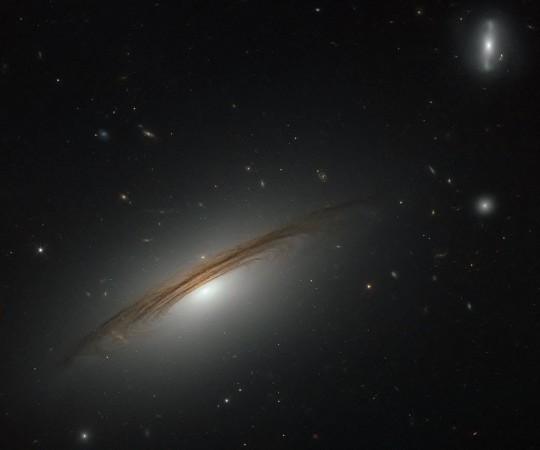
An incredible discovery has been made by NASA's Hubble Space Telscope (HST). A galaxy — UGC 12591 — located 400 million light-years away from Earth has been found to possess the characteristics of both a spiral galaxy, like our Milky Way, and a lenticular galaxy. Scientists have dubbed this a 'hybrid galaxy'.
Also Read: Mysterious fireball spotted in Tasmanian skies trigger conspiracy theories on Facebook
This amazing hybrid galaxy is located in the westernmost region of the Pisces–Perseus Supercluster, according to a NASA statement.
The Pisces–Perseus Supercluster is a long chain of galaxy clusters spread over a span of hundreds of light-years, and is known to be the largest known structure in space.
This galaxy is four times the mass of the Milky Way, having a mass equivalent about hundred billion times than that of the Sun. The galaxy doesn't possess too many stars, however, and spins at a speed of around 1.8 million kilometers (1.1 million miles) per hour, which is a lot faster thaan the Milky Way.
With the help of the Hubble telescope, scientists are analysing and trying to glean insights into UGC 12591. They are also trying to study the origins and evolution of the hybrid galaxy: Whether it spread slowly over a span of time, or grew into a bizarrely huge galaxy after colliding and merging with another giant galaxy.
Named after the astronomer Edwin Hubble, the HST was launched in 1990 from Earth's lower orbit. The telescope was devised by NASA and ESA (European Space Agency).

















